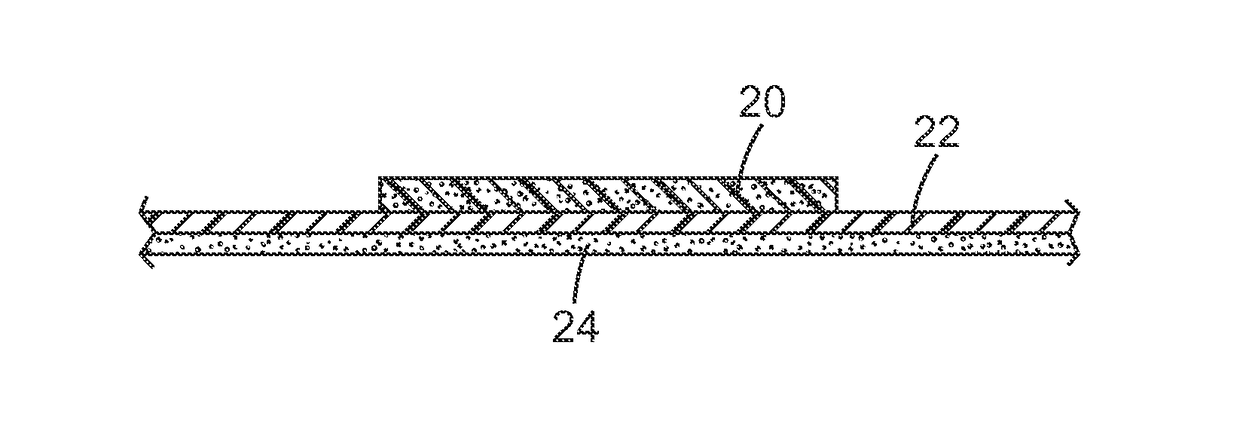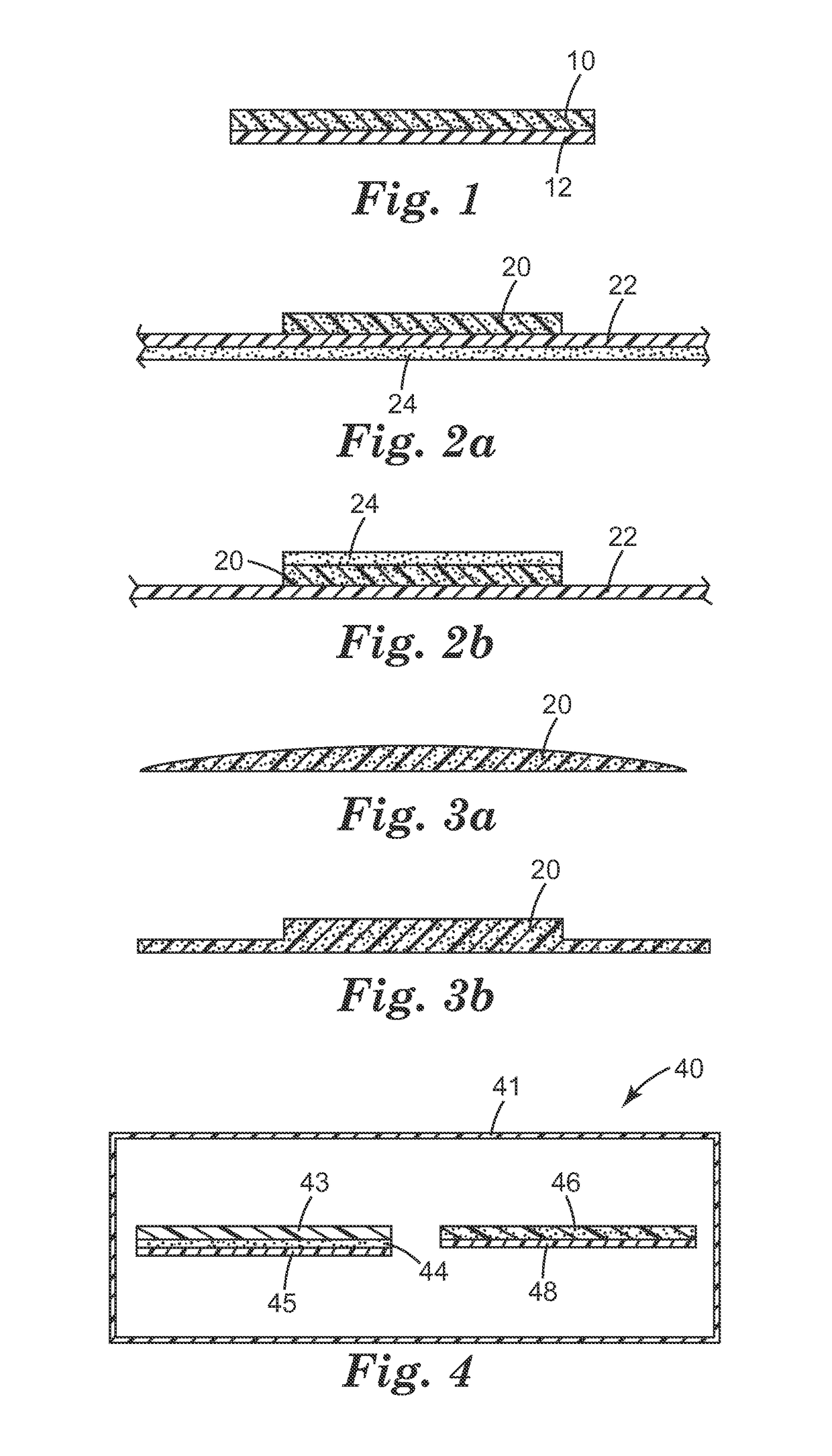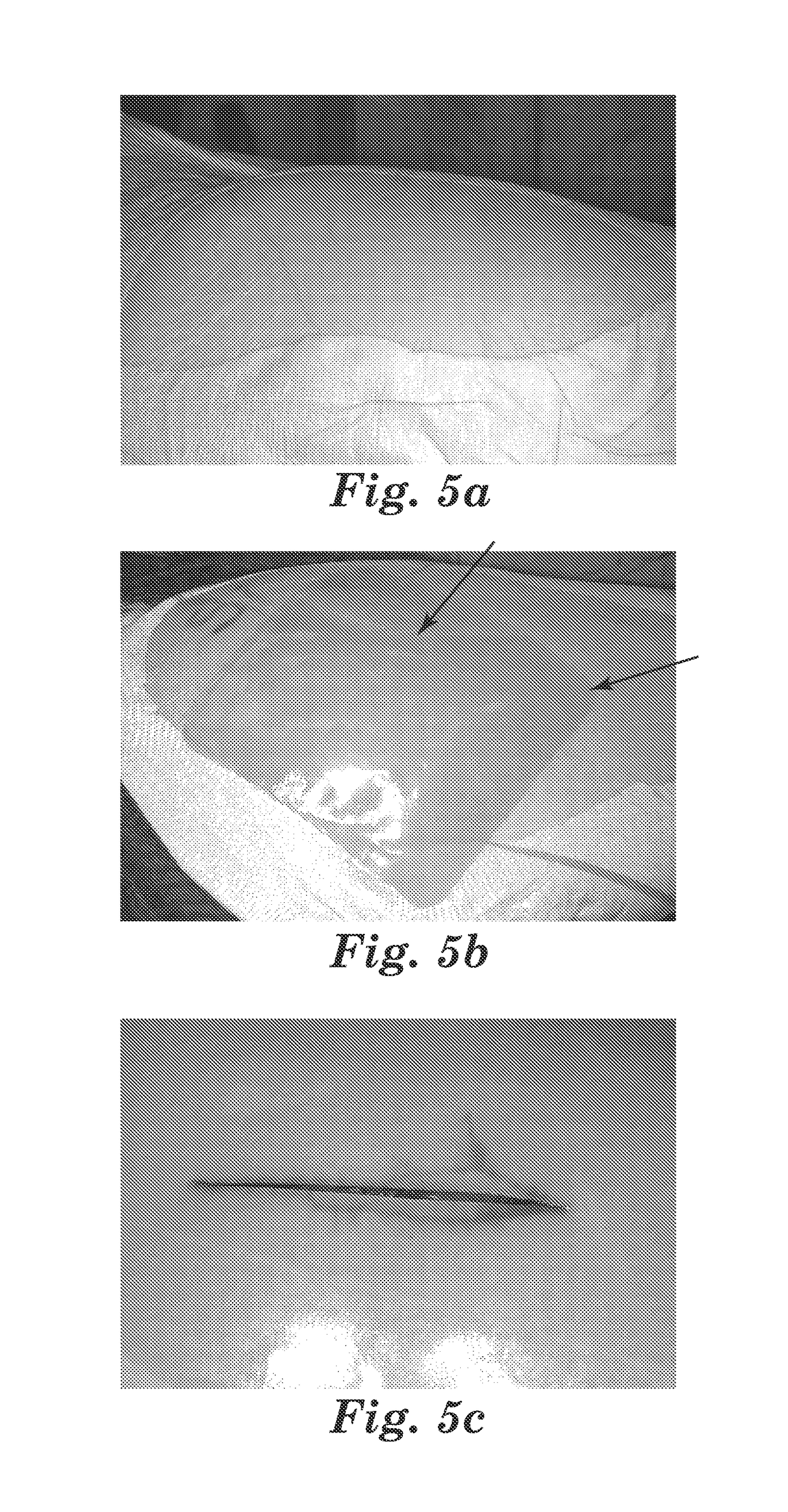Methods and products for reducing tissue trauma using water-absorbing stress-distributing materials
- Summary
- Abstract
- Description
- Claims
- Application Information
AI Technical Summary
Benefits of technology
Problems solved by technology
Method used
Image
Examples
embodiment 7
8. The method of embodiment 7 wherein the flexible polymeric film and the stress-distributing layer are attached together to form a stress-distributing composite before the surgical procedure.
9. The method of embodiment 6 wherein placing the flexible polymeric film and the stress-distributing layer in contact with one another on the patient comprises placing one of the flexible polymeric film and the stress-distributing layer in contact with the patient before the flexible polymeric film and the stress reducing material are attached together to form the stress-distributing composite.
embodiment 9
10. The method of embodiment 9 wherein placing the flexible polymeric film and the stress-distributing layer in contact with one another on the patient comprises placing the stress-distributing layer on the patient and adhering it thereto, and subsequently placing the flexible polymeric film on the stress-distributing layer to form the stress-distributing composite.
11. The method of embodiment 9 wherein placing the flexible polymeric film and the stress-distributing layer in contact with one another on the patient comprises placing the flexible polymeric film on the patient and adhering it thereto, and subsequently placing the stress-distributing layer on the flexible polymeric film to form the stress-distributing composite.
12. The method of any one of embodiments 6 through 11 wherein the flexible polymeric film is provided as a surgical incise drape.
13. The method of any one of embodiments 6 through 11 wherein at least a portion of the stress-distributing layer has a thickness of g...
embodiment 18
19. The method of embodiment 18 wherein adhering the stress-distributing layer to the surgical incise drape comprises adhering a double stress-distributing layer to the surgical incise drape.
20. The method of embodiment 18 or embodiment 19 wherein the retracting does not displace the surgical incise drape and stress-distributing layer from the patient along the incision while undergoing stretching and / or compression during retraction.
21. The method of any one of the preceding embodiments wherein the water-absorbing stress-distributing layer comprises a hydrocolloid.
22. The method of any one of the preceding embodiments wherein the water-absorbing stress-distributing layer is porous.
23. The method of any one of the preceding embodiments wherein the water-absorbing stress-distributing layer has a matte finish.
24. The method of any one of the preceding embodiments wherein the tissue of the patient is initially treated with a presurgical skin preparation.
25. The method of any one of the...
PUM
| Property | Measurement | Unit |
|---|---|---|
| Length | aaaaa | aaaaa |
| Length | aaaaa | aaaaa |
| Flexibility | aaaaa | aaaaa |
Abstract
Description
Claims
Application Information
 Login to View More
Login to View More - R&D
- Intellectual Property
- Life Sciences
- Materials
- Tech Scout
- Unparalleled Data Quality
- Higher Quality Content
- 60% Fewer Hallucinations
Browse by: Latest US Patents, China's latest patents, Technical Efficacy Thesaurus, Application Domain, Technology Topic, Popular Technical Reports.
© 2025 PatSnap. All rights reserved.Legal|Privacy policy|Modern Slavery Act Transparency Statement|Sitemap|About US| Contact US: help@patsnap.com



